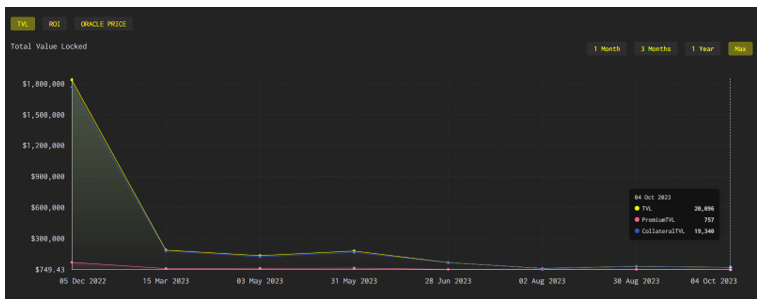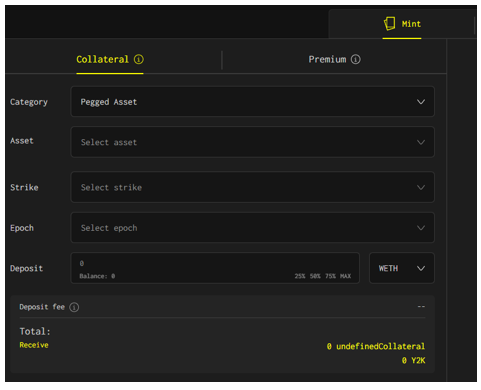 |
| By Bruce Ng |
My colleague Marija Matic said it best yesterday: “turbulence” is indeed in the air again. And that means additional volatility in every market, including crypto.
Sure, our Crypto Timing Model is showing that any downside action is likely to be contained to Q4 of this year. But we still have to navigate it.
It’s no secret that investors have been able to find incredible opportunities in crypto’s often volatile markets. But did you know that there’s a way you can bet on that volatility?
Even better, you can bet on something as simple as a stablecoin holding its peg.
Bet on the Peg
Stablecoins are crypto assets leveraged 1-to-1 to a fiat currency, usually U.S. dollars. That means each stablecoin should always be valued at $1.
While there are exceptions, generally when Bitcoin pulls back, the entire crypto market follows. If BTC retreats hard, the broad market can face some serious freefalls.
In the most severe cases, stablecoins have a high likelihood of losing that 1-to-1 peg. We’ve seen this occur numerous times before in the history of crypto, like during the collapse of the Terra network and even to a smaller degree when FTX was shut down.
Enter Y2K Finance (Y2K, Not Yet Rated), a DeFi platform that allows you to bet on stablecoins either holding its peg or depegging.
Y2K Finance has bets for various stablecoins, such as Tether (USDT), USD Coin (USDC), Dai (DAI) and Binance USD (BUSD). All of which have slight differences to how they work that could alter their ability to hold their peg.
So, you’ll need to research the pros and cons of the various stablecoins and be aware of the market in order to best place your bet.
Once you’ve done that, you’re ready to get started.
Using Y2K finance
Navigate to Y2K Finance and connect your MetaMask wallet.
Note: The platform runs on Arbitrum (ARB, Not Yet Rated), not Ethereum (ETH, “B”), so make sure your MetaMask wallet is on the right network to connect.

Source: y2kfinance.
Click here to see full-sized image.
For the sake of this example, let’s say you’ve done your research and you want to bet on USDC.
You’ll select the USDC market by clicking View Asset underneath USDC.
On the next page, you’ll see all the details of the market at the very top.

Click here to see full-sized image.
Let’s go through what each label means:
- USDC_980: This is just the name of the market. There are actually two markets for USDC on the site, with each having a different strike price.
- Strike Price: This is the depeg price. If the price of USDC goes below this price, the stablecoin has depegged. If it stays at or above this price, the peg has been maintained.
- Premium Multiplier: This is roughly the amount you would make if you won your bet.
Say you buy $1 of premiums that the peg would break — i.e., you pay $1 to place your bet. You would then stand to make roughly $24 when USDC goes below the strike price.
- Epoch Time: This is the time this whole contract will last.
In the example above, the contract is active from Oct. 4-30. If USDC does not depeg within this time period, then those who bet on the peg holding are paid all the deposits of those who bet against it. And vice versa if the opposite is true.
- Current Epoch TVL: This is the size of the market. It is the sum of all deposits for those who bet on peg and depeg.
A little further down on the page, you’ll see this chart:

Click here to see full-sized image.
This is a breakdown of the TVL based on bets. On the lower right corner, the latest positions are stated:
- The Premium TVL — those who bet the stablecoin will depeg — is $757.
- The Collateral TV — those who believe the peg will hold — is $19,340.
The amounts of these collaterals are important because it represents who bet what and how much each bettor gets paid, as the payoffs are determined by the ratio of how much each pool has.
For example, if more people deposit into the Collateral pool — i.e., they bet that the peg will hold — the larger the payoff for those who bet against it.
Now you’re ready to scroll down until you see the following empty input fields on the left side of the screen.

Click here to see full-sized image.
Above the input fields, you can see the Collateral and Premium tabs. Select the one you want based on how you want to bet, then fill in the rest of the information.
Then you’re all set! You’ll have to wait until the end of the epoch to learn whether your bet was successful or not.
Potential Pitfalls and 1 More Opportunity
It should be noted, though, that since stablecoins are, well, relatively stable in price, depegs aren’t common. Sure, you could stand to earn a lot if your depeg bet is placed at just the right time, like during heightened market volatility.
In fact, my colleague Juan Villaverde has reason to believe we are on the eve of some significant volatility. His outlook, based on his proprietary Crypto Timing Model, is indicating a relatively quiet Q4, a convergence of macro trends and the turning of the long-term crypto cycle will kick off a brand-new bull market.
To learn more about Juan’s analysis and his insight on some of those macroeconomic trends, I suggest you watch this informative video.
That said, it’s more likely that a peg will hold during most epochs.
And clearly, the payout for betting on a peg to hold is much lower as fewer people are betting against it on average. Again, because stablecoins tend to remain rather stable.
So, is this truly just another high-risk/high-reward crypto opportunity?
Not really. See, there’s a way to benefit from all this betting without needing to place one yourself, though it does carry the same risks as any other crypto investment.
Y2K Finance has its own native token, Y2K, which accrues a percentage of fees of all the traders in the market. It currently trades around 49 cents.
Typically, when volatility comes rolling back into the market, trading volume on Y2K Finance goes up. This drives more revenue to Y2K token holders and increases the speculative value of the Y2K token.
So, by owning Y2K, you can get a piece of the pie of ALL the bets on the platform, not just the one you win.
Best,
Bruce

